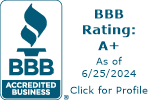Language, the Beauty and the Beast
It’s been interesting to be in a country where English is not spoken. Though we have met a few French people who speak English, they are primarily young. And none of the written signs or menus are bilingual. Using my translating app has been helpful and comical.
A Morning Adventure
This morning, I decided to go out strolling the back alleys alone. Every store and cafe I passed was closed. I wasn’t sure if it was because it’s Monday and most things close on Mondays or because it was still early. I found one little shop open. I wandered inside. They had a collection of vegetables and fruits, homemade bread, muffins, and marvelous imported olive oil (I know because I bought some and have already sampled it.)
The owner, fluent in English, struck up a conversation with me, and when he found out I lived in New Hampshire his eyes lit up, and he told me he had lived in Vermont with his family for a while. He brought over a bottle of maple syrup for me to look at. It was from Island Pond, Vermont!
When I checked out, I had a lovely conversation with his wife. Both were beautiful, warm, loving, and genuinely interesting people. Their presence blessed my day, and I left with a glow. I was super happy I had ventured out my door this morning. You never know who you will meet or what you will learn.
The Language Barrier
On the playground the other day, my three-year-old guy was playing hide and seek from me. I called out, “Where are you?” Immediately, a tiny little girl told her mama, “She said, ‘Where are you?’” Her mother smiled and gave her a satisfactory answer. Later, I started a conversation with the mother, who spoke English quite well. She explained that her daughter, who is three, speaks Portuguese, French, and German! When the daughter heard my language, she asked her mother what language I was talking about! Imagine speaking three languages by the time you are three!
On the way home, as I reflected on the goodness of these people, I thought about the language barrier. It can be a beast if you don’t understand one another. But, oh, the beauty when you can communicate. Though both of my morning acquaintances were fluent in English, it was the love that shone through their every word that touched my heart.
Fences: Barriers and Beauty
Fences can be barriers and beautiful at the same time. Some of my favorite uses of the wire mesh are as panels ensconced in wooden frames. Some of our customers have created excellent barriers for yards, swimming pools, and gardens using panels. Check out how to order panels.
When you create your fence projects, please share pictures with us!
Call Terry today at 978-486-3116 (or tap to call) and place your order!
All my best,
Debbie Page
CEO, Louis E. Page Inc – Woman-owned business and Family-owned since 1893. (It adds up to over 131 years owned and run by our family. Think about it: Nobody stays around in business that long without really supporting customers so they want to come back!)
P.S. Share your fence project pictures with us—we’d love to see your creations!










